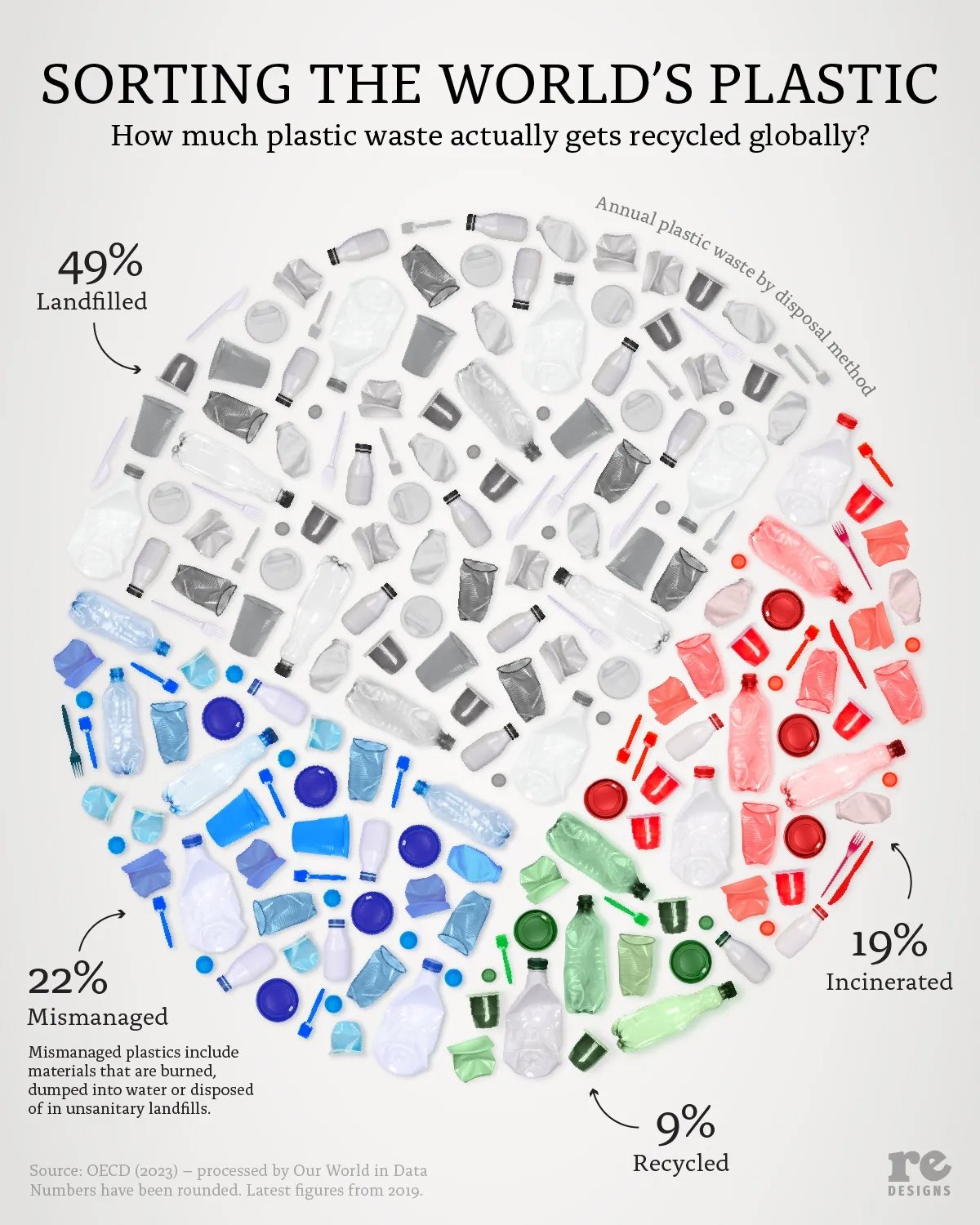Staff Reporter
The United States, known as the largest contributor to plastic pollution globally, recycles only about 5% of its household plastic waste.
While the global situation shows some improvement, a staggering 91% of plastic waste is still either incinerated, sent to landfills, or poorly managed—often ending up in our oceans.
Visual Capitalist’s Nick Routley highlights this issue, presenting a graphic by Rosey Eason that utilizes OECD data (via Our World in Data) to illustrate the current state of plastic waste disposal around the world.
Despite increasing awareness of the challenges posed by plastic waste, the question remains: why aren’t recycling rates improving?

The Illusion of Recycling
The recycling system faces significant challenges. Many types of plastics are incompatible, leading to costly and inefficient sorting processes. Only PET (#1) and HDPE (#2) are commonly recycled, meaning that most plastic products become difficult to repurpose once they’ve outlived their usefulness.
Economic factors also hinder recycling efforts. Virgin plastic, often supported by fossil fuel subsidies, is cheaper than recycled plastic, creating a financial disincentive to use recycled materials.
Additionally, the increase in flexible packaging—those lightweight pouches used for snacks and food—compounds the issue. These multi-layered packages, while convenient, are tough to recycle due to contamination and their complex materials.
What Can Be Done About Plastic Waste?
Tackling the global plastic crisis calls for systemic change. Here are some steps that could help reduce plastic waste:
- Implement bans on single-use and unrecyclable plastics.
- Establish a global plastics treaty.
- Phase out fossil fuel subsidies.
- Strengthen producer responsibility programs for plastic manufacturers.
Our everyday reliance on cheap and convenient plastics often overshadows the negative impacts that occur down the line. Addressing this issue will require a fundamental shift in our relationship with plastic, fueled by innovative policies and practices.

